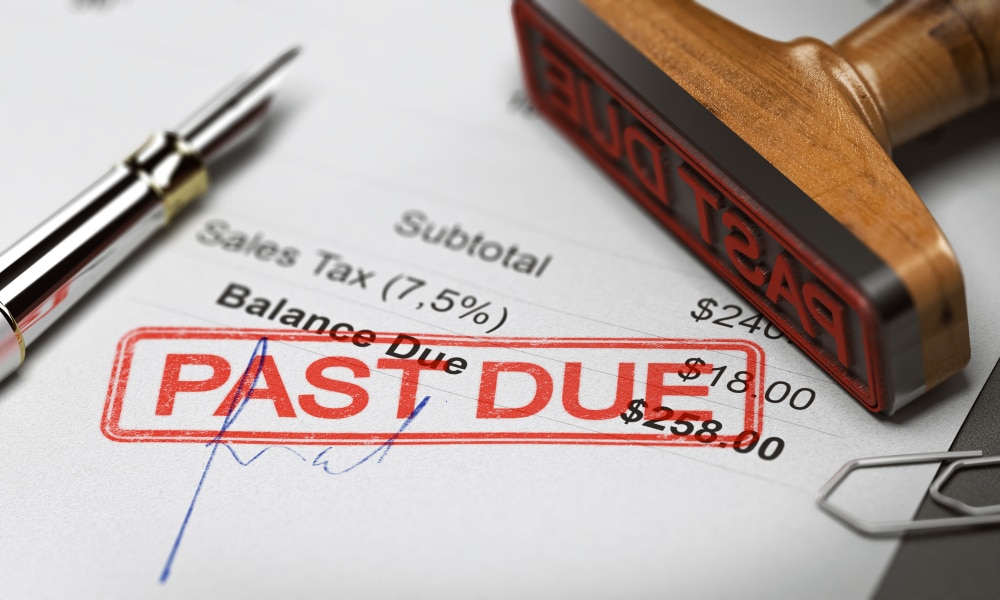Everything Expat Need to Know About How to Take a Bad Debt Deduction

Debts generally have a bad rap because they are owed money that needs to be paid or collected. But, closing out debt is not always easy for either the borrower or lender. There will be times when payment deadlines are missed, debts are not fully settled, or financial disputes arise.
However, not everything about debts is bad. Dealing with debts can somehow work to your advantage, especially if you are looking for possible tax deductions. Here, it’s crucial that you fully understand what bad debt deduction is and how to leverage it as part of your tax compliance strategy.
Learn more about bad debt deduction in this article.
What is Bad Debt Deduction?
A bad debt tax deduction is a way of writing off or reducing your taxable income in situations where you’re unable to collect from someone who owes you money. Those uncollectible accounts may come in the form of loans to clients, suppliers, or employees.
Providing credit sales to customers and acting as a business loan guarantor also fall under bad debt. If they remain unpaid and cause you to incur losses, they become bad debts.
You can then declare those bad debts on your tax return and have them partially or fully taken off your gross income at the end of the year. As with other tax provisions, you need to know the applicable rules from the IRS to consider your bad debts valid and apply tax deductions.
What is Proof of Worthlessness?
Eligibility to claim a bad debt deduction on your income taxes requires that the debt is already worthless—it is no longer collectible. Proof of worthlessness is any document or event that signifies you have incurred bad debt. This is necessary to show that the borrower has completely stopped making payments or no longer has the means to pay you back.
Unpaid debt is considered worthless if you have exhausted all possible efforts—issuing invoices, making follow-up calls, or sending letters or emails to the debtor—to collect payment. At this point, it’s safe to conclude the debt has lost its worth or value.
These identifiable events can also serve as proof of worthlessness:
- Cessation of the debtor’s business
- Bankruptcy filing from the borrower
- Disappearance or death of the debtor (supported by a death certificate, return mail marking the recipient as deceased, and the like)
- Deficiency in the sale proceeds of a property intended as security for the debt
- Sheriff’s notations on a writ of execution that there’s no property found or that the property cannot satisfy the loan repayment
Business and Non-Business Debt
Bad debt can either be business debt or non-business debt. As the names imply, business bad debt refers to debt arising from business transactions. On the other hand, non-business bad debts are those you incur outside of conducting business affairs.
A typical example of bad debt affecting business owners is selling products and services on credit to customers who eventually don’t pay up. Meanwhile, for non-business owners and employees working in or out of the U.S., bad debt can include lending money to relatives or friends and not getting paid back despite having a written agreement with the borrowing party.
There are other ways that these two types of debt differ from each other. Business debt results in ordinary losses (business expenses exceed income), while non-business debt causes short-term capital losses.
With business debt, the ordinary loss is 100% deductible in the year the loss is incurred, without waiting for the debt to become worthless. On the other hand, non-business debt is only deductible in the year it becomes worthless.
Business bad debts are also not subject to an annual deduction limit. On the contrary, non-business bad debts have a $3,000 cap on deductions. This is because they are short-term capital losses subject to an annual limit.
Either way, bad debt deductions can be helpful for businesses and individuals in lowering their corresponding tax brackets. You must use Schedule C on Tax Form 1040 when filing business bad debts and Form 8949 when making claims for non-business bad debt tax deductions.
Special Considerations
Not all bad debt is tax deductible, though, with typical exceptions including unpaid salaries, rents, or fees.
It’s also possible not to write off bad debts on your tax forms at the end of the year. Suppose your company has a credit agreement with another company to supply goods or professional services. If the client closes shop and cannot pay the invoice before you can record the income from the transaction for the current year, you can only file the bad debt as part of your tax deductions the following year.
Meanwhile, as an individual taxpayer, you cannot deduct on your taxable income any amount you loaned out to someone you know may not be able to repay it. It is considered a gift instead of a loan.
How to Determine Your Bad Business Debt
Since most bad debts are related to businesses, owners and managers must understand this financial aspect. In particular, you need to be aware of the methods you can use to estimate your business’s bad debt.
Accounts Receivable Aging Method
This method is handy in keeping your tax records organized throughout the year.
Here’s how it works: all receivables are grouped based on how long the accounts have been outstanding. Then, using historical data, specific percentages are assigned to each group. Finally, you can determine the unpaid debt by getting the aggregate value of receivables across the groups.
Sample:
- One set of receivables has been outstanding for less than 30 days, totaling $50,000. Another set has been overdue for more than 30 days, totaling $20,000.
- Historically, you know that 1% of the accounts from the first set will be uncollectible, while for the second set, it’s 5%.
- Compute the value for each group or set and add them: ($50,000 x 1% = $500) + ($20,000 x 5% = $1,000). Your bad debt, corresponding to your total outstanding receivables, is $1,500.
- If the outstanding receivables amount to $2,000 in your next accounting period, your bad debt for that period is $500 ($2,000 – $1,500).
Percentage of Sales Method
As with the accounts receivable aging method, you need to identify your company’s bad debt patterns. Then, based on recorded data, you’ll apply a flat percentage to your total sales for a given period.
Sample:
- Your company posts net sales worth $50,000 for a specific month or quarter, but you anticipate that you won’t collect 2% of those sales based on previous performances. Therefore, you’ll potentially have $1,000 to report as bad debt.
- Suppose your net sales dip to $40,000 in the next accounting period. Using the same 2% formula for uncollectible or doubtful accounts, you may incur $800 in bad debt.
- Taking the aggregate losses for the first and second accounting periods, your total bad debt is $1,800.
4 Steps to File Your Bad Debt
Here are four steps to follow when filing your bad debt for a tax deduction:
- Complete Form 8949, Sales and Other Dispositions of Capital Assets, to report your non-business bad debt as a short-term capital loss.
- Enter the amount of the debt on Line 1 in Part 1, which is for short-term losses. If you have several bad debts, list them all on separate lines.
Then, write the debtor’s name in column (a) while indicating that you have attached the bad debt statement. This statement must contain the details of the debt or loan, including the amount, due date, and efforts made to collect repayment, among other relevant information. - Enter your reporting basis in column (e).
- In column (d), write “zero” to indicate the amount the borrower did not repay.
Turn Bad Debt into a Tax Benefit
Debts come with risks, such as being unable to collect payments. This is the negative part you’ll want to avoid. Fortunately, you can do something to turn things around. With the help of experts in tax preparation services, you can file bad debt under tax deductions to help you offset any loss you’ve suffered.
As your tax resolution partner, Tax Samaritan allows you to recover your funds with the best-in-class tax preparation service. Ask for a free consultation.


